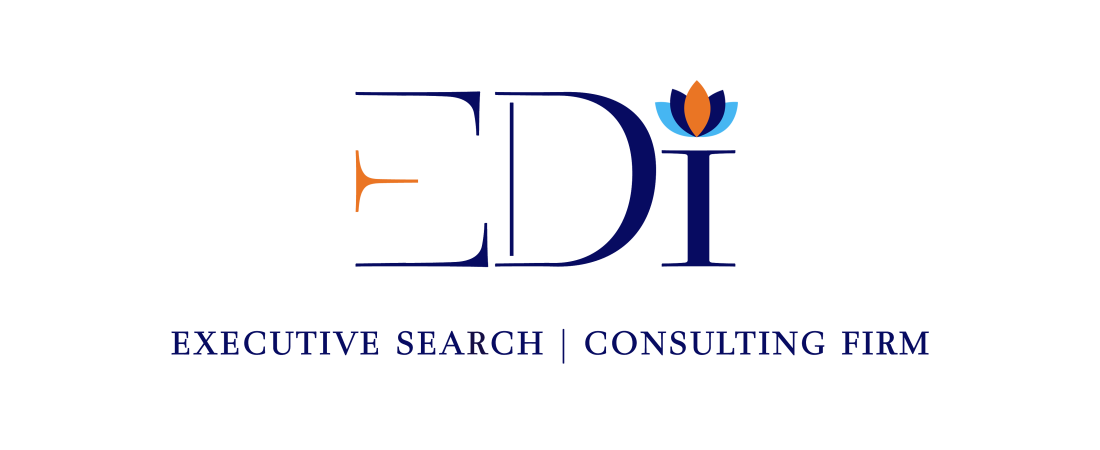By Mohammed Ahamed
CEO & CDO, EDI Executive Search & Consulting Firm. Motto: Connecting Hearts & Minds…to change organizational culture

EDI’s Racial Equity Series focuses on the intersection of issues confronting equity, diversity, and inclusion in education, corporation HR, Non-Profit Organizations, and society at large. This series features articles, research, and allegories that bring these issues into focus and at the center of our public discourse.
When it comes to recruitment, there are many factors that dictate what the process should entail, how it must be conducted, and who should be involved. This article explores some of the initial steps needed to facilitate a successful inclusive search for your organization.
Whether you’re looking to stretch your imagination on the benefits of diversity or perhaps, rethinking how to attract the most talented, diverse, and inclusive leaders, it is needless to say that the two are not mutually exclusive. Gone are the days when networking was solely based on “who you know,” and the idea that we can simply post jobs and hope to attract people is antiquated and, arguably, an approach in today’s increasingly interconnected global economy. Nonetheless, new and innovative methods have proven to create pathways that can enhance our ability to engage active and passive talent. At EDI, we focus on developing strategies with our clients and training their people to become the inclusive leaders every potential applicant would like to work with. As a result, we want to share a few ideas to help you reimagine your recruitment strategies for 2019 and beyond with an inclusive lens.
1. Strategic Plan: What is the imperative driving your hiring practices? Is it guided by a strategic plan, vision, mission, or philosophy? Strategies provide guidance and vision and help organizations allocate resources to address pressing imperatives. Without them, you may be heading for the abyss. For example – one of our clients needed to hire someone and wanted to get it done within a short period. After our initial consultation, we suggested they have a high turnover in these positions because no specific strategies guide their hiring practices. Here are a few questions to ponder before you create a position description and begin your hiring. The obvious question to ask is
- Why did you create this position?
- What strategic goal(s) does the position help fulfill?
- How would you design/create accountability to support your goals?
- Here, a big picture and 30k feet view of your organizational goals is imperative. For instance, imagine trying to build a house without a vision of your completed home. It will create chaos for everyone involved, from engineers to contractors and everyone in-between, leading to mistakes. Thereby costing you a lot of valuable time and resources and, ultimately, a stressful situation for everyone involved that can lead to them quitting/leaving the job site.
2. Policy Review: What are the guiding principles for all your hiring managers within your organization? These tenets dictate how, when, and why you recruit the way you do. These policies often determine the methods divisions, units, and departments are supposed to employ when filling a position. For example, if we were to continue the previous scenario above. What happens when you have a design of that house but don’t have a blueprint? We encourage you to consider what it would look like if you had a blueprint for your hiring practices going forward. This blueprint should inform everything your organization does regarding recruitment and hiring. Note: As you develop these policies, we advise you to ensure bias mitigation as your essential indicator, as well as accountability, are laid out throughout your procedure.
3. Recruitment Strategy/Approach: The ultimate reality is that most of your recruitment efforts will be consistent with your competitors. What are you doing to set yourself apart from them? How have you designed these strategies from above to create the buy-in from all your constituents? For example, if you keep hiring people using the same platforms, job templates, jargon, and methods, you will likely have the same problem in the future. We encourage you to rethink how, where and who you attract into your organization. What are the mediums/platforms you utilize, and are they adequate? Do you have any partnerships that can broaden your scope and reach a more inclusive approach? Are you being intentional about your recruitment strategy? In that, is it a quick-fill or a campaign? And if so, what tools do you have at your disposal to accomplish these? You have to be honest with yourself about the resources. If you are a small department with limited resources, you may have to be more creative than your competitors to get this right. Stretch that imagination.
4. Advertisement Outlet (Medium): The outcome of your search could very well be determined by some of the decisions you make early in the process, such as where to advertise your positions, etc. Depending on the type of industry, position, and location you decide to engage with candidates, there are several variables you should consider. Your advertising strategy must be comprehensive in scope, organized, and easy for the applicants to find, apply and follow all prompts, and requirements in your Ad. This means you must develop a marketing campaign to enhance your visibility and highlight key position details to attract your ideal candidates. In other words, you must put together a presentable, clean, and clear profile for the position. Ask yourself this – what are the markers of success for the role? It also means that you have to keep a robust list of where you post and share your job openings and be sure to ask applicants how they found you for future reference.
5. Interview Process: Notwithstanding any specific methodology is the need to develop a robust interview process that captures the essence of the job in its entirety. Of course, an inclusive/holistic framework is essential here. Before you set the parameters, here are a few things to consider.
- Train your entire hiring and interview team/committee on implicit biases and how they affect decision-making. Here is where you deploy your diversity leadership to train your committee to ensure they understand what impact these biases have on attracting qualified diverse, and inclusive talent for your organization.
- Set and highlight your organization’s policy on EOC and established guidelines to help you achieve these goals.
- Organize your questions in a way that mitigates biases. The key here is to ensure these questions are consistent for all your interviewees, irrespective of ranking or likability.
- Implement a strategy to correct any interviewer that goes/steps outside of the process.
6. Follow Up: Be thorough in your follow-up with candidates. Naturally, not all applicants will make the list of final candidates. Still, you want to leave a lasting impression in their minds about your organization, so be mindful about setting in place follow-up instructions. Keeping accurate data will afford you the depth you may need in future searches.
7. Be honest with candidates from the onset to ensure there are no surprises when you deny their application or candidacy. Ask for the privilege to retain their information for future opportunities, and be sure to enter that information in a secure and safe database that you can easily access when needed. Be patient throughout this entire process and allow your team the time to digest and provide feedback about the process. Additionally, ask candidates about their experience and conduct thorough due diligence.
Conclusion
Organizations preparing for the second quarter of the 21st century are doing so at an alarming pace. In the era of AI and digitization, technology has circumvented most of the manual and tedious steps we have grown accustomed to. We must create strategies, processes, and policies that will allow us to meet the expectations of talented applicants and leave lasting impressions/experiences when they encounter or interface with our organizations during their job search process. They will either keep you in mind and share their positive experience with other talented individuals for future openings or not. We have developed these methodologies to help you and your team acclimate to the necessary steps needed to engage in an inclusive talent acquisition process. While these are certainly not comprehensive in scope, we are ready to engage with you on this journey.


